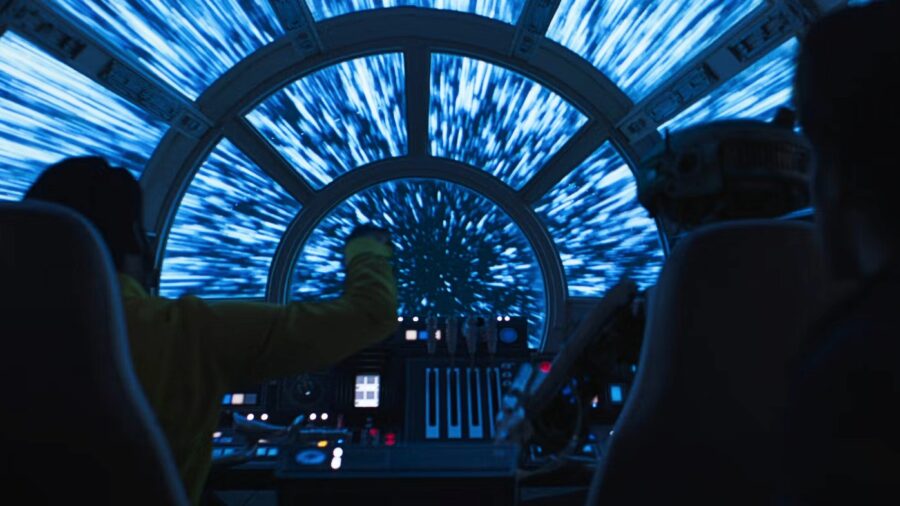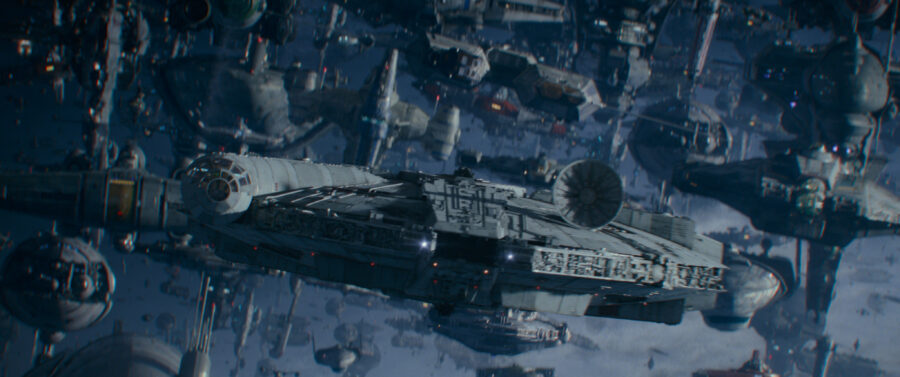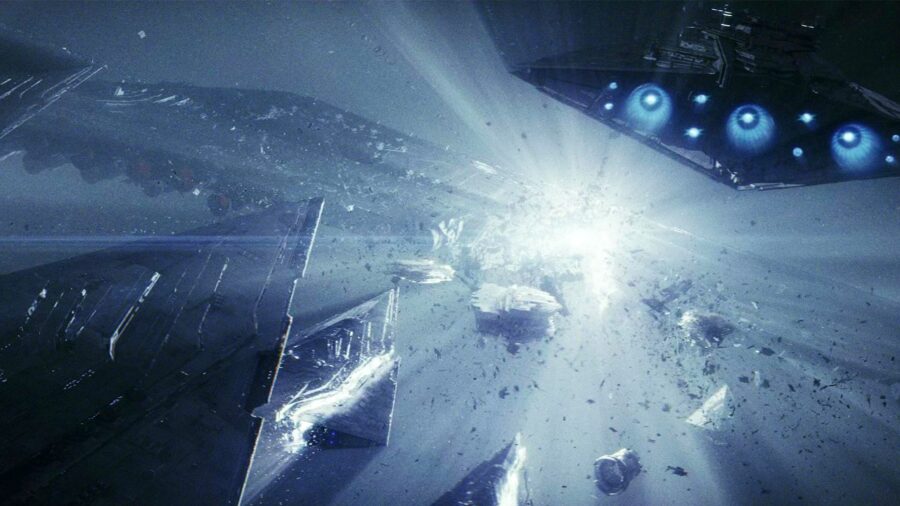How Hyperdrive Works In Star Wars, Explained
In Star Wars, hyperdrives manipulate hypermatter particles to send starships into hyperspace for fast travel along intergalactic roads.

Every space franchise worth its spice has a method of faster-than-light travel. Star Trek has warp speed, Battlestar Galactica has jump drives, and Star Wars has hyperspace. The difference between the three, however, is that while the first two properties fancy themselves science-fiction, Star Wars is pure fantasy. As such, the Star Wars hyperdrive—the mechanism that allows a ship to travel faster than light—was never supposed to make sense in any scientific way. Of course, different authors have come up with their explanations anyway.
In Star Wars, most spacegoing vessels are equipped with a device called a hyperdrive that, when engaged, transports the ship into an alternate dimension known as hyperspace. The transition to hyperspace causes the stars to look like they are warping to the point where they become lines of light. These star lines have become synonymous with space travel in the Star Wars universe.
Hyperspace exists parallel to real space but without the normal space/time limitations that faster-than-light travel runs into in the real world. In the Star Wars universe, hyperdrives are what made interstellar travel possible.
The invention of the hyperdrive is what led to galactic-wide colonization and trade. It’s the reason Luke can get from Tatooine to Dagobah in only a few days when it would normally take years.

In Star Wars, hyperdrives work by manipulating hypermatter particles in such a way that it thrusts a starship into hyperspace while simultaneously preserving the ship’s mass/energy profile. This means that when a ship like the Millenium Falcon enters the hyperspace dimension, it still retains the properties of our dimension, ensuring a smooth transmission in an out of hyperspace….usually.
One of the biggest dangers associated with hyperspace travel is that objects in realspace cast a “mass shadow” in hyperspace. If a vessel traveling through hyperspace were to run into the shadow of a planet or an asteroid, it would have the same catastrophic effect as running into it in real space. Worse technically, since the vessel in hyperspace is traveling so fast.
This is why one of the first things many Star Wars civilizations did after the invention of the hyperdrive was map out safe paths for trade and exploration. These hyperspace routes were extremely tricky to navigate, necessitating the use of a nav computer to plot the safest path for a starship pilot to take between two destinations.
Hyperdrives are rated by class. The lower the class, the faster the hyperdrive. Civilian ships were rated Class Three or higher, while government and military ships were usually rated Class Two or One.
Scoundrels like Han Solo would often modify their ships to make them faster, ensuring a quick getaway while smuggling contraband. The Millenium Falcon specifically has the fastest hyperdrive in Star Wars with a mind-blowing Class 0.5.
Many smaller ships, like starfighters, didn’t possess nav computers and were built with sockets where astromech droids could be inserted. When you watch Star Wars and see R2-D2 hanging out in the back of Luke’s X-Wing, he’s plotting a safe course through hyperspace to feed into the hyperdrive.
Some small ships, like the Empire’s TIE fighters, lacked any hyperspace capability altogether and had to be ferried to and fro by bigger capital ships like Star Destroyers.
Of course, mapped-out hyperspace lanes can’t account for random debris or asteroids, which is why all of Star Wars’ hyperdrives are equipped with sensors that pull a ship violently back into realspace if an object is detected. You can see an example of this in A New Hope when rubble from the recently destroyed Alderaan yanks the Millenium Falcon out of hyperspace.
The Empire and later the First Order would use Interdictor ships that were capable of generating gravity wells to trick a hyperdrive into bringing their prey out of hyperspace. These Interdictor vessels could also use the same tactic to prevent ships from entering hyperspace as well.
At least once in recorded Star Wars history, a hyperdrive was used as a weapon instead of a method of travel. In the 2017 movie Star Wars: Episode VIII – The Last Jedi, a desperate Admiral Holdo pointed her ship, the Raddus, at the First Order fleet and engaged her hyperdrive, hoping that ramming into the fleet as the ship attempted to enter hyperspace would cause a big enough distraction that the rest of the resistance could escape.
The distraction ended up being more than big enough.

While it’s hard to understand exactly how the Holdo Maneuver worked without reading the detailed Wookipedia entry on the subject, what isn’t hard to understand is just how devastating it was. Essentially a last-ditch suicide tactic, the Holdo Maneuver sacrificed the Raddus and cleaved the First Order’s flagship, the Supremacy, in half.
While that alone is impressive enough, the maneuver also caused a zig-zag of energy to crackle through 20 Star Destroyers, completely obliterating them in the process.
The move was conveniently dubbed “one in a million” in the follow-up Star Wars movie Rise of Skywalker as a way to explain why the resistance couldn’t just use a bunch of hyperdrives to take out the newly resurrected Emperor’s fleet.
Ultimately the Star Wars concept of hyperdrives doesn’t make a whole lot of sense mechanically, and hyperspace is still essentially a magic highway with…whales for some reason. But what do fans expect from a franchise full of space wizards and sasquatches that use crossbows to fire lasers?












